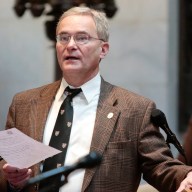New York has been feeling the heat this summer, and with another stretch of blazing days predicted for the weekend, Metro asked heat wave historian Edward Kohn for some insight into the city’s sweltering past. Kohn’s forthcoming book, “Hot Time in the Old Town,” examines one of the United State’s least remembered, but most deadly, natural disasters: the heat wave of 1896 which killed nearly 1,300 people in Manhattan alone.
How would today’s New Yorkers fare in the 1896 heat wave? Are we complainers?
I think that’s right. We have electric refrigeration and air conditioning. The ability to drink a cold glass of water on a hot day is an amazing luxury that was not available to people in 1896. It was a city of manual labor not a city of office workers. The working poor of New York worked six days a week, 10-hour days, and literally worked themselves to death.
How has air-conditioning changed New Yorkers’ perceptions of heat? Does it make them feel that they are immune to heat affects?
Things like that lull us into this false sense of security. Of course I can go out jogging in the worst heat ever because I can go back to my air conditioning afterwards. Technology contributes to our lack of awareness that heat is still so dangerous in the 21st century.
Does local government do enough today to deal with heat crises?
Today there is a well-established social safety net that simply did not exist before. Most cities now have cooling centers, they phone elderly people, they even do door to door visits, so that is a huge improvement. But I would love to see Mayor Bloomberg give a press conference and make a heat wave sound as dramatic as a blizzard.
So is there a problem with our understanding of heat waves?
The television images that we have during heat waves are of children frolicking in fountains and people eating ice cream. They’re very positive. With other natural disasters the images are of floating bodies, damage done to buildings. They’re much more sinister pictures, but heat waves result in more deaths than all of those natural disasters combined.














